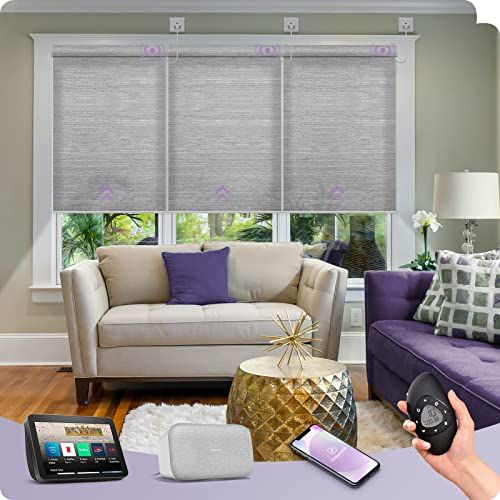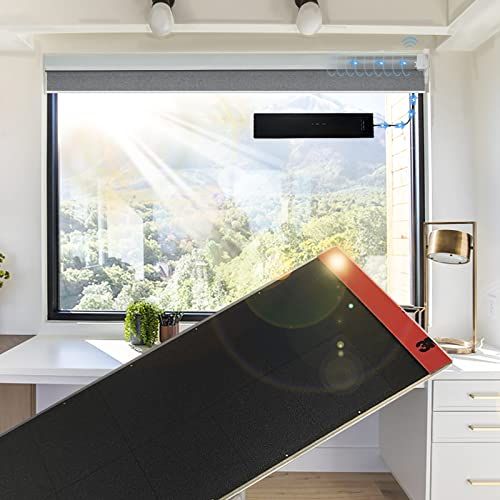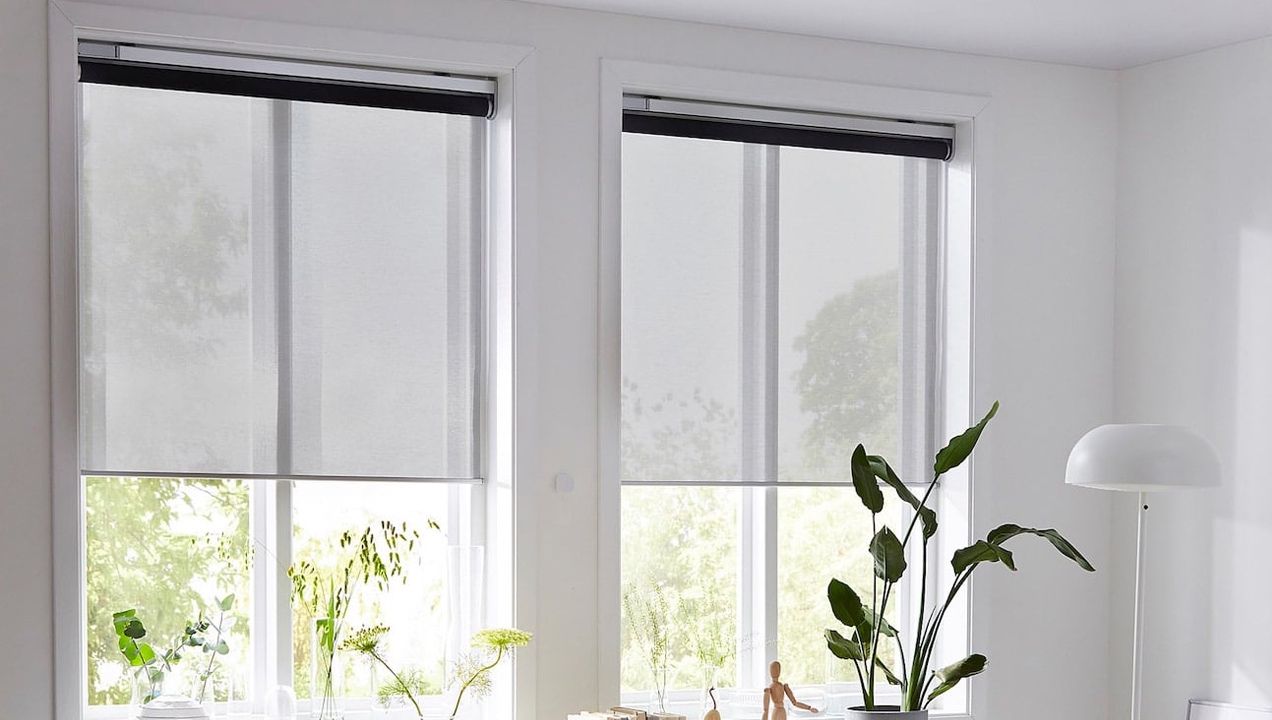Quick Links
Key Takeaways
Smart blinds can be powered by line voltage, low voltage, battery, and even solar power. Each power source has a benefits and a downsides.
You might assume that smart blinds are all battery-powered, but there are more than a few ways to power the automagic of a smart blind assembly.
Line Voltage: Loads of Power
Old-school automated blinds, and some modern smart blinds, use line voltage---the same voltage found at the outlets in your home. For North American readers, that's alternating current (AC) at 110 volts.
If you've ever been in a home with old-school automated blinds---long before smart home tech was common and even holiday lights were automated and cloud-connected, some high-end homes had semi-automated systems controlled by switches or remotes---there is one thing that stands out: the noise.
Automated blinds that run off line voltage tend to have very noisy AC motors, and there is zero question as to whether or not the motor is in operation. The noise can be substantial in a large room with multiple automated blinds.
One area where line voltage-powered blinds shine is strength. They might be noisy, but if you're moving large blinds or heavy curtains, they'll do so consistently and without worrying about straining the motor or swapping the batteries frequently.

Graywind Motorized Light Filtering Shades
These shades can be hard wired or plugged in, and controlled either by a manual switch or integration with your smart home.
Line voltage motorized window treatments are either hardwired directly into a circuit or plugged into a nearby outlet. Outside of high-end custom homes, windows wired with line voltage for motorized window treatments are rare.
There are quite a few aftermarket options out there for line voltage smart blinds, shades, and drapes, but most of the best-selling direct-to-consumer options are from a company called Graywind---they offer both battery-powered and line voltage options, but their line voltage options are the most popular.
If your home wasn't wired specifically for this kind of automation, be prepared to chew up a lot of outlets plugging smart blinds in.
Low Voltage: Requires Special Wiring or Loads of Outlets
Low voltage systems use direct current (DC) at 12 or 24 volts. Rarely--and like line-voltage setups usually only on higher-end custom homes--a home is wired for low-voltage wiring to each window to drive the window treatment motors.
It's highly unusual for an existing home to have a low-voltage in-wall retrofit for window treatments though, so if you find low-voltage smart blinds in older construction, you're more likely to find a plug-in model.
In that case, the smart blinds run off low-voltage DC provided by a wall-wart transformer plugged in nearby. The popular Rollerhouse brand roller blind retrofit kits, for example, use DC power supplied by a plugin adapter.
On the upside, you never have to swap the batteries. On the downside---just like with wired line-voltage options---there is a wire dangling down your wall and a bunch of outlets taken up by your smart blind transformers. It works, but it's less than ideal.
Battery Powered: The Convenience You Crave
If you've done any smart blind shopping, perhaps in a bid to round out your smart bedroom, you've surely noticed that the vast majority of the direct-to-consumer options on the market are battery-powered. The offerings from IKEA, Eve, Lutron, and others require no specialty wiring or connection to line voltages but instead use removable or internal battery packs.
Lutron's Serena line of smart blinds uses plain old alkaline batteries (and has a staggering battery life of 5+ years with regular use), IKEA blinds have a removable battery you charge once or twice a year, and Eve's roller blinds have a permanent internal battery you charge in place to get around a year of run time. Their competitors have similar setups using disposable, removable, or internal batteries.
Whatever the battery type, the battery-powered options offer the convenience of not tying up your outlets or requiring any special wiring, eliminating the hassle of fussing with the batteries every 6-12 months.
Solar Power: Battery Power on Steroids
There are a few options on the market with a power source that is a rather useful and obvious solution when you stop to think about it. Solar power might be useful for powering your outdoor security cameras, but it is useless for most technology in your home for want of consistent access to the sun. But your window treatments are right there at the window, making solar-powered smart blind motors a natural fit.
One of the more notable solutions on the market is the solar-powered options from SmarterHome's MySmartRollerShades line (formerly MySmart Shades by Tilt).

Graywind Solar Panels for Smart Blinds
These solar panels add-ons ensure you'll never have to charge your smart blind batteries again.
In addition to the MySmarterRollerShades line, you can also find a variety of offerings from various smaller companies that include a solar panel you can stick to the window or place on the window sill. Previously mentioned smart blind company Graywind has an aftermarket panel you can use to trickle charge smart blinds via the micro USB or USB-C cable.
Naturally, small solar panels are only well-suited for windows that get full or partial sun throughout the day. When used in north-facing windows, you should expect a modest benefit but not the never-needs-charging effect you'd get from southern window placement.

